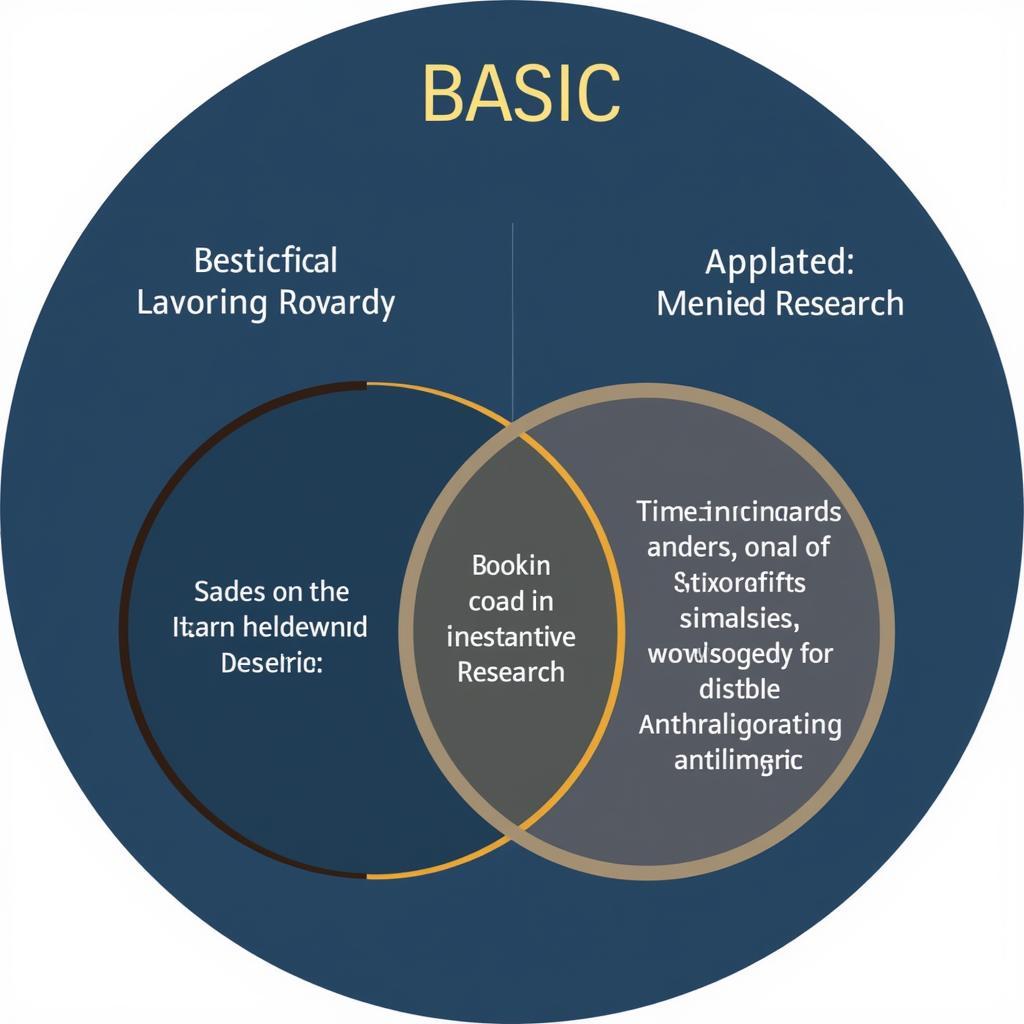The world of paranormal research is full of unanswered questions and intriguing possibilities. As investigators venturing into the unknown, we often find ourselves grappling with the best methods to study these elusive phenomena. This leads us to a fundamental question: “[basic research vs. applied research]” – which approach holds the key to unlocking the secrets of the paranormal?
 Basic vs. Applied Research in Paranormal Investigations
Basic vs. Applied Research in Paranormal Investigations
Delving into the Unknown: Basic Paranormal Research
Basic research, often referred to as “pure” or “fundamental” research, seeks to expand our understanding of the fundamental principles governing a particular phenomenon. In the context of paranormal research, this means delving into the very nature of ghostly apparitions, psychic abilities, or UFO sightings without necessarily seeking immediate solutions or applications.
Think of basic research as laying the foundation for a house. Before building walls and a roof, you need a solid base. Basic research, for example, might involve:
- Analyzing historical accounts and folklore: Examining ancient texts and local legends for recurring patterns and potential insights into the phenomena. For instance, researching historical accounts of haunted locations to understand the origins and characteristics of the entity involved.
- Conducting controlled experiments: Investigating the potential of electromagnetic fields (EMF) to influence the manifestation of paranormal activity. This could involve exposing a controlled environment to varying EMF levels while monitoring for changes in paranormal phenomena.
- Developing theoretical models: Formulating hypotheses about the nature of consciousness after death or the mechanics of extrasensory perception (ESP), even if these models can’t be immediately tested.
Seeking Solutions: Applied Paranormal Research
Applied research, on the other hand, takes the knowledge gained from basic research and applies it to solve specific problems or answer practical questions. In paranormal investigations, this might involve:
- Developing new investigative techniques: Utilizing the understanding of EMF and paranormal activity to create more effective methods for detecting and communicating with spirits. For example, designing specialized equipment that filters out environmental EMF noise to isolate potential paranormal signatures.
- Testing the effectiveness of existing tools: Evaluating the reliability of dowsing rods or EVP (Electronic Voice Phenomena) recorders in different environments and under varying conditions to determine their accuracy and limitations.
- Developing protocols for safe and ethical investigations: Applying knowledge about potential psychological and spiritual risks associated with paranormal encounters to establish safety measures for investigators and witnesses. This could include developing guidelines for grounding techniques or pre-investigation cleansing rituals.
Finding the Balance: Bridging the Gap Between Basic and Applied Research
While these two approaches might seem distinct, they are inherently interconnected. Basic research provides the knowledge and understanding that fuels applied research, which in turn often reveals new questions and areas for further exploration.
For example, applied vs basic research in the study of psychokinesis (the ability to move objects with the mind) could work in tandem. Basic research might focus on understanding the potential energy fields or brainwave patterns involved in psychokinesis. Meanwhile, applied research could use this knowledge to develop techniques for individuals to enhance their psychokinetic abilities or explore practical applications like remote healing.
 The Symbiotic Relationship Between Basic and Applied Research
The Symbiotic Relationship Between Basic and Applied Research
FAQs: Unraveling the Complexities of Paranormal Research
1. Is one type of research “better” than the other in paranormal investigation?
Not necessarily. Both basic and applied research are crucial for advancing our understanding of the paranormal. They work best in conjunction with each other.
2. Can anyone conduct paranormal research?
While curiosity is a great starting point, conducting rigorous paranormal research requires a combination of open-mindedness, skepticism, ethical conduct, and often, specialized knowledge in various fields.
3. Are there any dangers involved in paranormal research?
Yes, both psychological and spiritual risks can be associated with paranormal investigation. It’s important to approach investigations with caution, respect, and a focus on safety.
Seeking Answers Together
The world of paranormal research is vast and complex. By embracing both basic and applied research approaches, we can work together to shed light on the mysteries that have captivated humanity for centuries.
If you’re interested in diving deeper into the world of paranormal research, explore our articles on applied v basic research and the difference between basic and applied research. You can also find valuable insights on crafting a strong research foundation with our guide on example of a purpose statement in research and learn about effective data analysis techniques in our piece on analyzing data in quantitative research.
Remember, the pursuit of knowledge is a journey best taken together. If you need assistance in your paranormal exploration, our team at Paranormal Research is here to help. Contact us at 0904826292, email us at research@gmail.com, or visit our office at No. 31, Alley 142/7, P. Phú Viên, Bồ Đề, Long Biên, Hà Nội, Việt Nam. Our dedicated team is available 24/7 to answer your questions and guide your path.